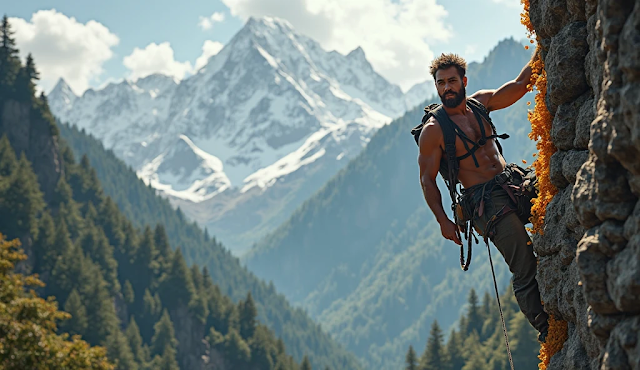Nepal, a land of towering Himalayan peaks, ancient temples, and vibrant cultures, is a bucket-list destination for adventurers, spiritual seekers, and culture enthusiasts alike. However, navigating its diverse landscapes and customs requires careful planning. Whether you’re trekking to Everest Base Camp, exploring Kathmandu’s UNESCO sites, or immersing yourself in rural village life, reliable travel tips are essential for a safe and enriching experience.
This guide compiles the best resources for Nepal travel advice in 2025, ensuring your trip is informed, seamless, and unforgettable. We’ve analyzed government advisories, expert blogs, and local insights to bring you a comprehensive, resource packed with actionable tips.
Before booking your trip, consult official government sources for up-to-date safety, health, and entry requirements.
Key Resources:
Smartraveller : Highlights risks like civil unrest, natural disasters, and health precautions, including altitude sickness and drink spiking in Kathmandu and Pokhara.
UK FCDO: Advises on political protests, transportation safety, and COVID-19 protocols.
US Department of State: Emphasizes avoiding solo treks, safeguarding valuables, and registering with the embassy.
Pro Tip: Bookmark these sites for real-time updates, especially during monsoon season (June–September), when landslides and floods disrupt travel.
A. Indie Traveller
Focused on backpackers, this blog offers gritty, firsthand insights:
Trekking Logistics: Hire guides (15/day) and porters (10/day) for ethical support and safety.
Kathmandu Survival Tips: Navigate chaos by staying in Thamel, avoiding unlicensed taxis, and exploring rooftop cafes.
Food Recommendations: Try momos (dumplings) and dal bhat (lentil curry with rice) at local eateries.
B. The Common Wanderer
A goldmine for responsible travel:
Sustainable Practices: Support community homestays (e.g., Panauti) and eco-lodges.
Trekking Guides: Detailed packing lists for Annapurna Circuit and Ghorepani Poon Hill, emphasizing reusable water bottles to reduce plastic waste.
C. Mahlatini
Luxury and culture-focused tips:
Accommodation: Stay at heritage hotels like Dwarika’s in Kathmandu or eco-resorts near Pokhara.
Wildlife Safaris: Visit Chitwan National Park for rhino and tiger sightings with certified guides.
Nepal Mountain Guide Team
Permits and Routes: Secure TIMS (Trekkers’ Information Management System) and national park permits. Popular routes include Everest Base Camp, Annapurna Circuit, and Langtang Valley.
Altitude Sickness: Acclimatize properly; symptoms above 2,500m can be fatal without evacuation coverage in travel insurance.
Life Himalaya Trekking
Cultural Sensitivity: Dress modestly at temples (cover shoulders/knees) and haggle respectfully in markets.
Unique Festivals: Plan visits around Dashain (September/October) or Holi (March) for immersive cultural experiences.
Vaccinations and Medical Prep
Required Vaccines: Hepatitis A, Typhoid, and Polio. Consider Rabies if interacting with animals.
Altitude Medication: Carry Diamox and oral rehydration salts. Clinics in Kathmandu (e.g., CIWEC) specialize in traveler health.
Food and Water Safety
Avoid Tap Water: Use bottled water or a SteriPen. Skip raw salads and unpeeled fruits to prevent gastrointestinal issues .
Methanol Risks: Stick to sealed alcohol bottles; spiked drinks are reported in tourist areas .
Money and Communication
Currency: Exchange USD or EUR for NPR (Nepalese Rupee) upon arrival. ATMs in cities charge high fees; carry small bills for tips.
SIM Cards: Ncell or Nepal Telecom offers affordable data plans. Download offline maps for remote areas.
Transportation
Domestic Flights: Buddha Air and Yeti Airlines connect Kathmandu to Pokhara and Lukla. Note: EU blacklists Nepal’s airlines for safety concerns .
Buses: Opt for tourist coaches over local buses for safer roads (e.g., Kathmandu to Pokhara: 6–8 hours) .
Responsible Tourism
Reduce Plastic: Carry a reusable bottle and participate in clean-up treks.
Empower Women: Book tours led by female guides or stay at women-run homestays.
Best Time to Visit
October–November: Clear skies, ideal for trekking and festivals.
March–May: Rhododendron blooms in Annapurna; warmer temps but pre-monsoon haze.
Avoid June–September: Monsoon rains trigger landslides and leeches in lower regions.
Visa on Arrival: Available for 15–90 days (100). Bring passport-sized photos and cash in USD/EUR.
COVID-19 Rules: Check for vaccination or PCR test requirements pre-departure.
Trekking Gear: Moisture-wicking layers, broken-in boots, and a -20°C sleeping bag for high-altitude treks .
Universal Adapter: Nepal uses Type C, D, and M plugs (220V) .
Medical Kit: Include antibiotics, blister pads, and altitude sickness tablets .
Top FAQs
Is Nepal safe for solo female travelers?
Yes, but avoid isolated areas at night and dress conservatively.How much does a Nepal trip cost?
Budget travelers: 30/day; luxury: $100+/day .Can I volunteer in Nepal?
Yes, but ensure programs are ethical and avoid orphanage tourism .
Conclusion: Crafting Your Perfect Nepal Adventure
Nepal’s magic lies in its contrasts—chaotic cities versus serene mountains, ancient traditions alongside modern resilience. By leveraging resources like government advisories, expert blogs, and local guides, you’ll navigate this Himalayan gem with confidence. Prioritize safety, respect cultural norms, and embrace sustainable practices to leave a positive impact.
Ready to Explore? Start planning with the links above, and let Nepal’s peaks, people, and palaces inspire your 2025 journey!
Nepal travel tips 2025, trekking in Nepal, Nepal safety advice, Nepal visa requirements, best time to visit Nepal, Nepal cultural etiquette, sustainable tourism Nepal.
Connect sections on trekking, festivals, and accommodations for improved navigation.
Readability: Short paragraphs, bullet points, and subheaders enhance skimmability.
For further details, explore the sources cited in this article or visit trusted platforms like Intrepid Travel and Smartraveller.






0 Comments